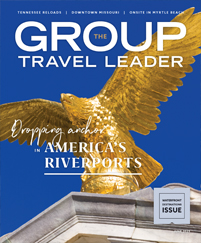Just by looking at their tourism slogans, you get an idea of how much the history, heritage and culture of Natchez and Vicksburg, Mississippi, are closely tied to the Mississippi River. Natchez is “Where the river runs wide, and the history runs deep,” and “Vicksburg was born on the river.”
“We are the oldest continuous settlement on the river,” said Jessica Cauthen of Visit Natchez, whose town will celebrate its 300th anniversary in 2016 with a yearlong schedule of events.
“We will have some new things and will revamp some of the old,” she said.
As a key transportation artery, the river played a major role in the economic development of the towns, helping fuel an agricultural economy built around large cotton plantations, whose wealthy owners constructed large mansions in Natchez to escape the summer heat.
The river’s importance also led to the Union’s year-and-a-half effort to capture Vicksburg during the Civil War.
The river continues to play an economic role as the location of several floating casinos, redeveloped areas such as Natchez Under-the-Hill with its restaurants and shops, and docking sites for the new generation of riverboats that are plying the Mississippi. Vicksburg has even decorated its floodwall with murals depicting the city’s history.
However, Natchez and Vicksburg have more to offer than just the river.
“Houses are big, and the outdoors are huge,” said Cauthen. “Live music is our new thing. We have music almost seven days a week, all but Monday. Most restaurants and bars and the casinos have music.”
A local man is redoing a former historic grocery into a blues juke joint that is scheduled to open later this year near the river.
“Of course, we are known for the Civil War battle, but we have many other attributes,” said Ashley Gatian, group services manager for the Vicksburg Convention and Visitors Bureau. “We have museums, wonderful architecture, four casinos and music with live blues every Tuesday, Friday and Saturday.”
Both towns are part of the new Americana Music Triangle, which runs from Nashville to Memphis to New Orleans.
However, Natchez and Vicksburg still celebrate their longtime famous attributes.
Antebellum Masterpieces
Natchez has one of the largest collections of antebellum homes in the South, which are showcased with its annual fall and spring pilgrimages, and nearly a dozen mansions are open year-round for tours.
Stanton Hall and Longwood offer extreme examples.
Cotton merchant Frederick Stanton built a palatial Greek Revival residence near downtown Natchez in 1858, taking up a city block. Beautifully restored to its antebellum splendor, the house is replete with expensive ornamentation such as marble mantelpieces from New York, 14-foot-tall mirrors imported from France and ornate brass and gold chandeliers.
“He built this house to entertain,” said a guide at Stanton Hall.
Although octagon-shaped Longwood was designed by Philadelphia architect Samuel Sloan to be a shrine of opulence for cotton planter Haller Nutt, the house was never completed.
“When the Civil War started, the work stopped,” said guide Sandy Garrison. The workers, many from the North, literally dropped their tools and left for the war.
“Stuff was just left lying around,” said Garrison. “That work bench has been there since 1860. The exterior looks pretty much like it does now, but the only place livable was in the basement. The upstairs was never finished.”
Nutt died bankrupt in 1864, and his widow, Julia, raised most of their eight children in the unfinished house and lived there until she died in 1894. The family used the house as a residence until 1968.
A Battle Remembered
The Vicksburg National Military Park preserves lots of the earthworks and fortifications from the Civil War and focuses on the final 47-day siege that resulted in the town’s surrender on July 4, 1863.
“We preserve and interpret the entire campaign, one and a half years, with the culmination of the siege,” said ranger Ray Hallem. “You can see the footprint of fortifications. The way you see it now was the way it was from May 22 on.”
The park, with 16 miles of road, is filled with 1,500 monuments and is the largest Civil War cemetery in the United States. “There are 18,000 Union troops, 13,000 of whom are unknown,” said Hallem.
A major target of Union shelling of Vicksburg was the large courthouse sitting high on a hill above town. The historic building is preserved as the Old Court House Museum and is filled with thousands of items of local memorabilia.
“Almost everything here relates to Vicksburg history or Vicksburg families,” said George “Bubba” Bolm, curator and director. “Nearly everything is original; there are no reproductions.”
Bolm noted that Union Gen. Ulysses S. Grant addressed his victorious troops from the building and Confederate President Jefferson Davis later gave his last speech there.
“Grant came back as president,” said Bolm. “He said it was much easier getting in that time.”
The Old Depot Museum, near the river, features more than 250 intricately detailed model ships, “from flatboats to modern-day aircraft carriers,” said director Lamar Roberts, along with three model-railroad layouts and a detailed diorama of the Vicksburg battlefield, with more than 2,300 tiny soldiers, that is very helpful in visualizing what took place.











